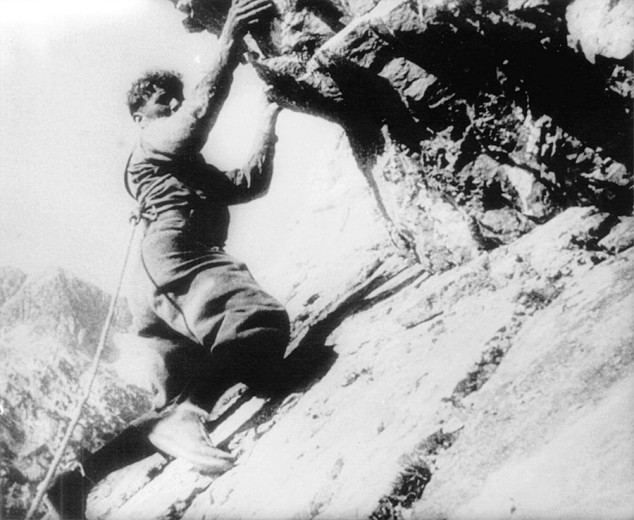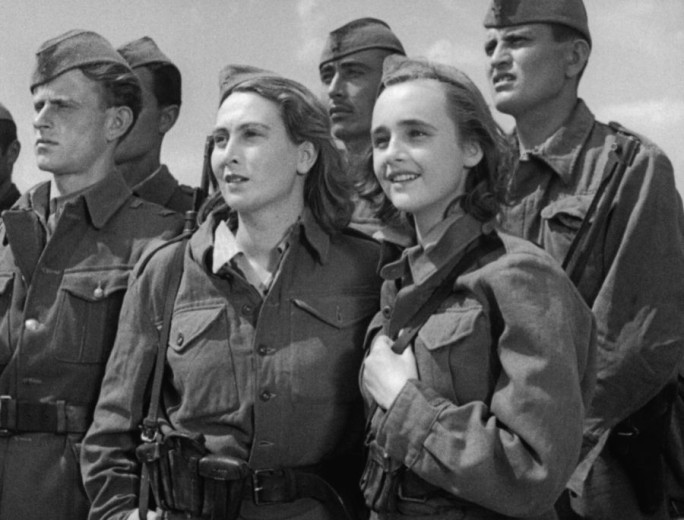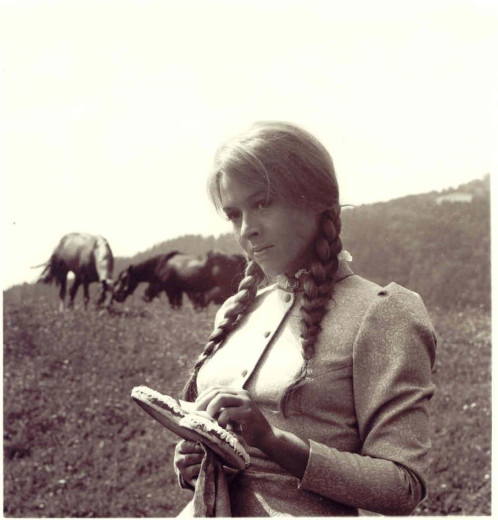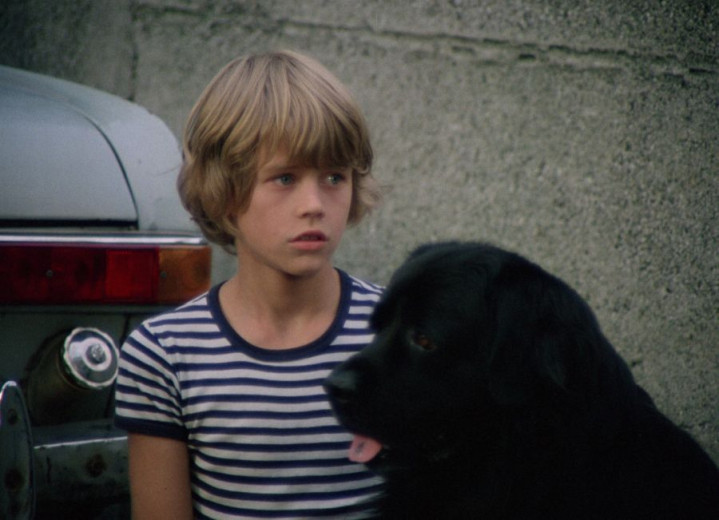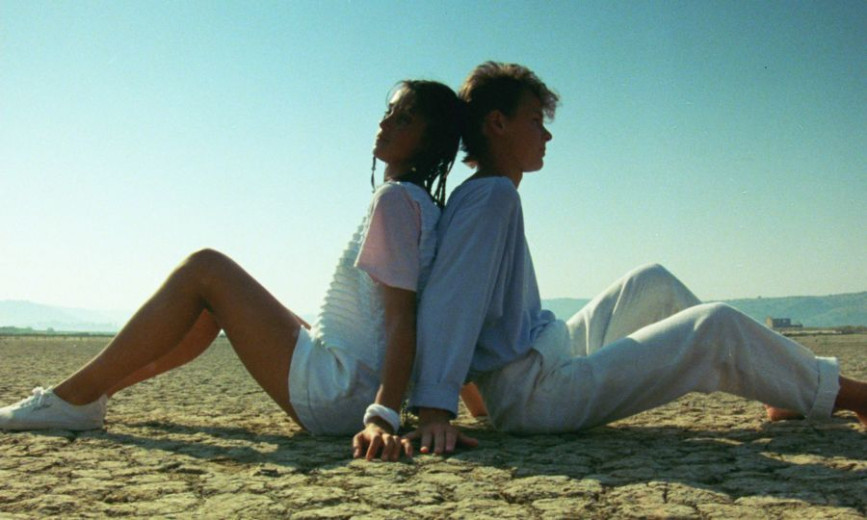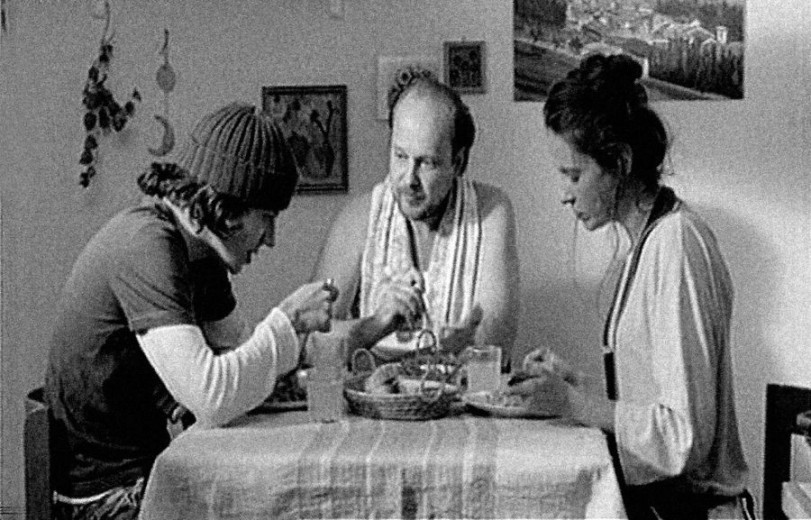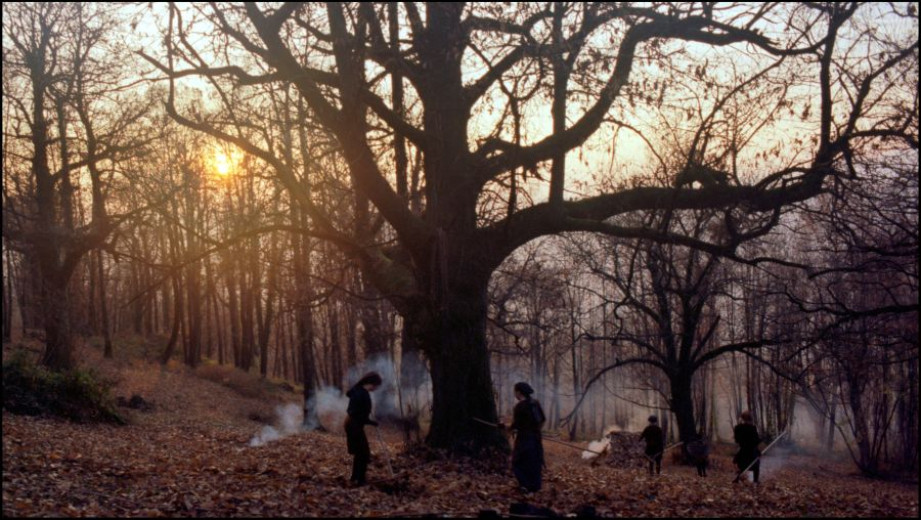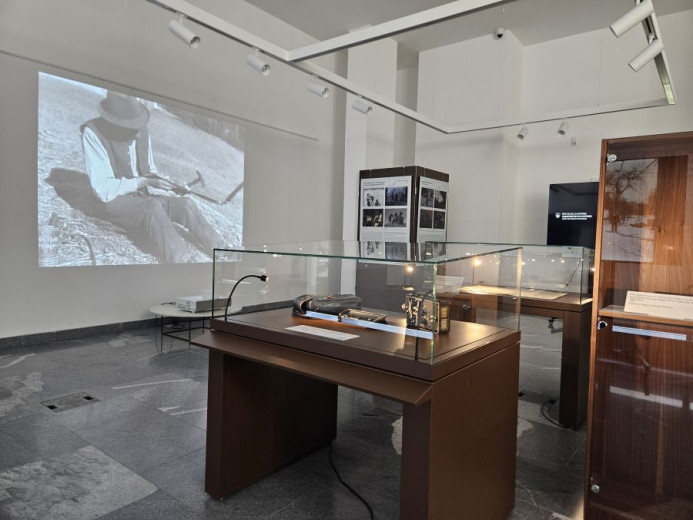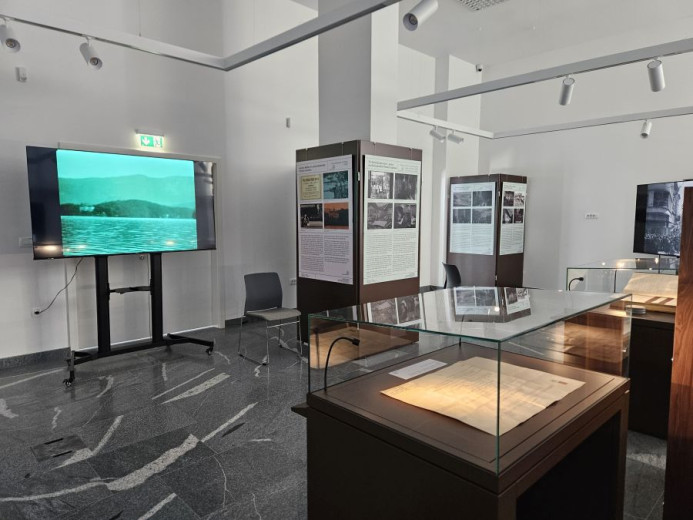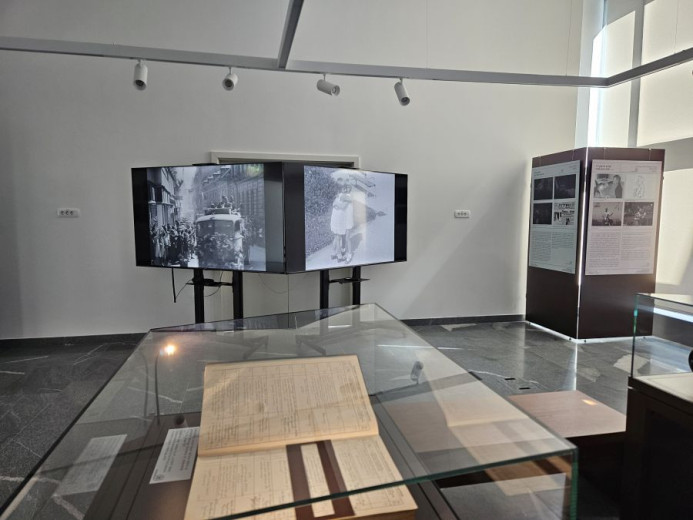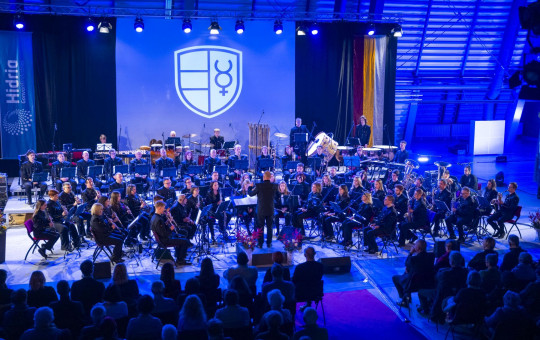Date: 24. July 2025
Time to read: 4 min
The cinematic history of Slovenia began in Ljutomer in 1905. People leaving the church after morning mass. This moment of everyday life in 1905, captured on film, is considered to mark the beginning of filmmaking in Slovenia. This short film, shot in a single take on a seven-metre-long reel of film, was the work of the visionary and lawyer Dr Karol Grossmann from Ljutomer. This year marks 120 years since the first preserved film recordings. Every year, Ljutomer honours the Slovenian film pioneer by holding the Grossmann Fantastic Film and Wine Festival.
-
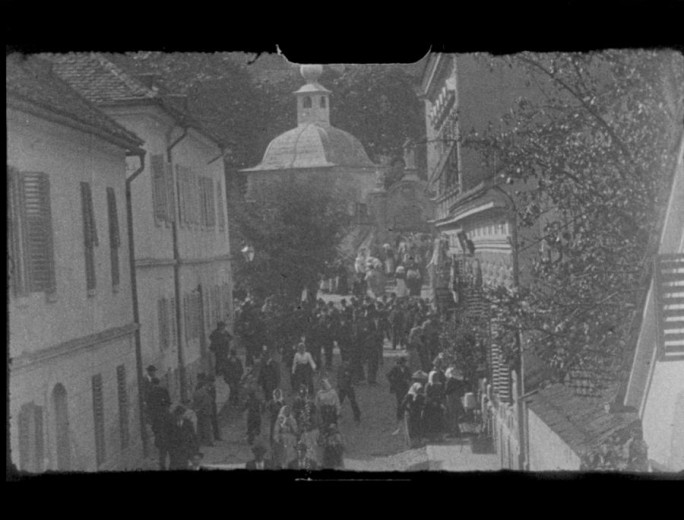 Dismissal from Mass in Ljutomer; cinematographer: Karol Grossmann; Material held by: Archives of the Republic of Slovenia, SI AS 1086 Film Collection.
Dismissal from Mass in Ljutomer; cinematographer: Karol Grossmann; Material held by: Archives of the Republic of Slovenia, SI AS 1086 Film Collection.
-
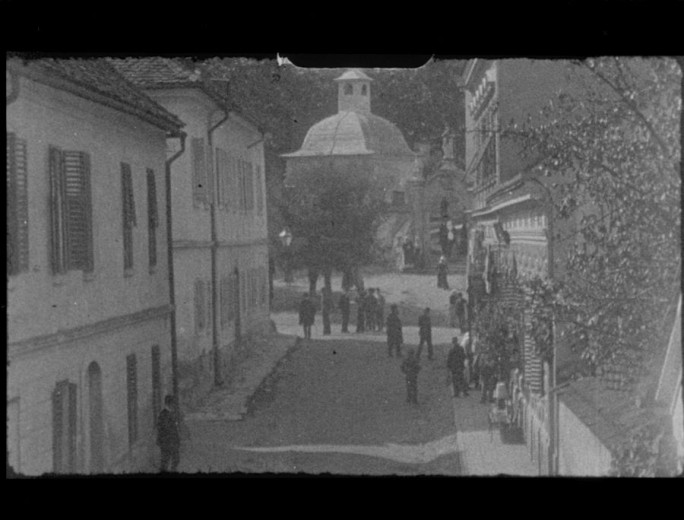 Dismissal from Mass in Ljutomer; cinematographer: Karol Grossmann; Material held by: Archives of the Republic of Slovenia, SI AS 1086 Film Collection.
Dismissal from Mass in Ljutomer; cinematographer: Karol Grossmann; Material held by: Archives of the Republic of Slovenia, SI AS 1086 Film Collection.
-
 The Grossmann Festival of Fantastic Film and Wine is a Slovenian film festival dedicated to genre cinema, especially horror and fantasy films. Photo: Tina Babič
The Grossmann Festival of Fantastic Film and Wine is a Slovenian film festival dedicated to genre cinema, especially horror and fantasy films. Photo: Tina Babič
-
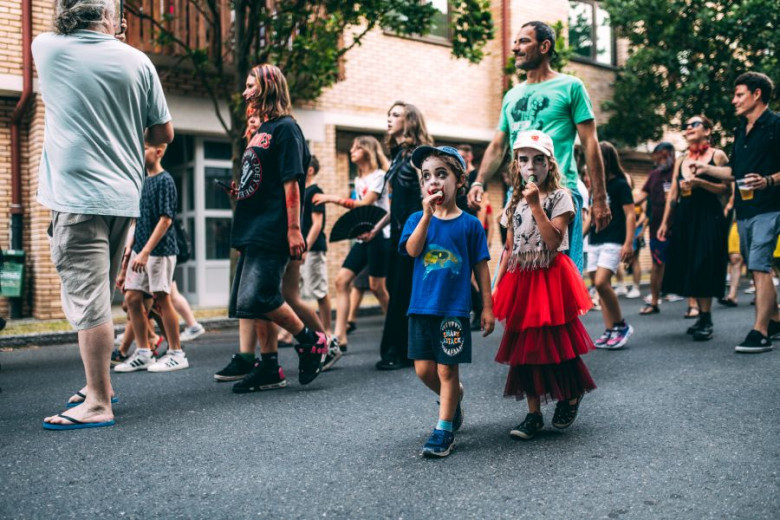 A traditional highlight of the Grossmann Festival each year is the Zombie Walk, when people dressed and made up as zombies take to the streets of Ljutomer. Photo: Špela Jambriško
A traditional highlight of the Grossmann Festival each year is the Zombie Walk, when people dressed and made up as zombies take to the streets of Ljutomer. Photo: Špela Jambriško
Unforgettable films in the embrace of the mountains
From its very beginnings, Slovenian film has had a strong connection to nature and the mountains. To mark the 120th anniversary of Slovenian film, two legendary films for young audiences by director Jože Gale – Kekec (1951) and Good Luck, Kekec! (Srečno, Kekec!, 1963) – were premiered in digital format. The hero of one of the most beloved youth films has come to life once again, for us and for future generations.
-
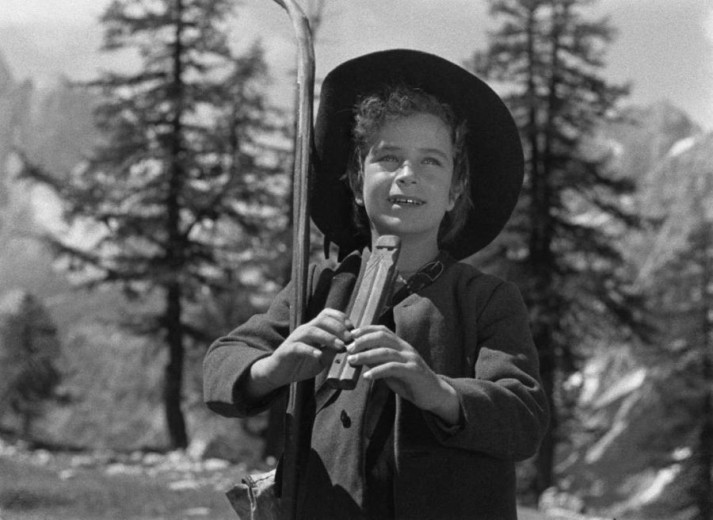 Kekec (1951). Photo: Archive of Slovenian Film Centre
Kekec (1951). Photo: Archive of Slovenian Film Centre
-
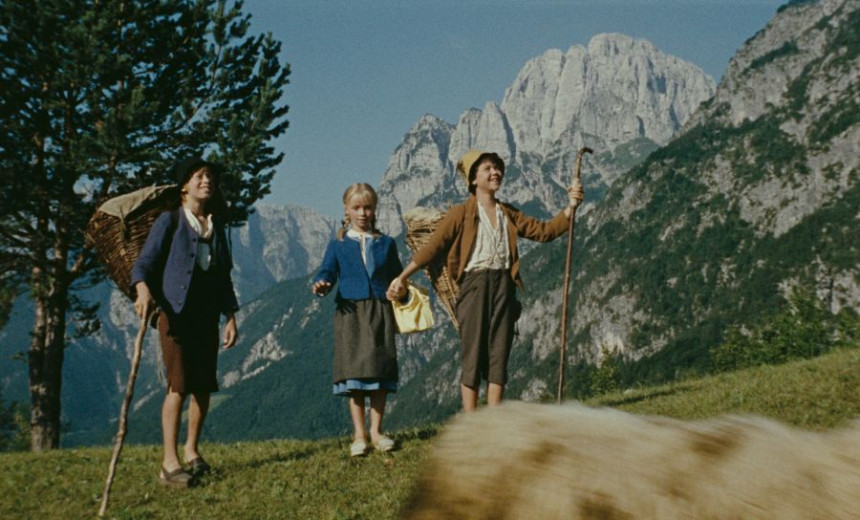 Good Luck, Kekec! (Srečno, Kekec!, 1963). Photo: Archive of Slovenian Film Centre
Good Luck, Kekec! (Srečno, Kekec!, 1963). Photo: Archive of Slovenian Film Centre
-
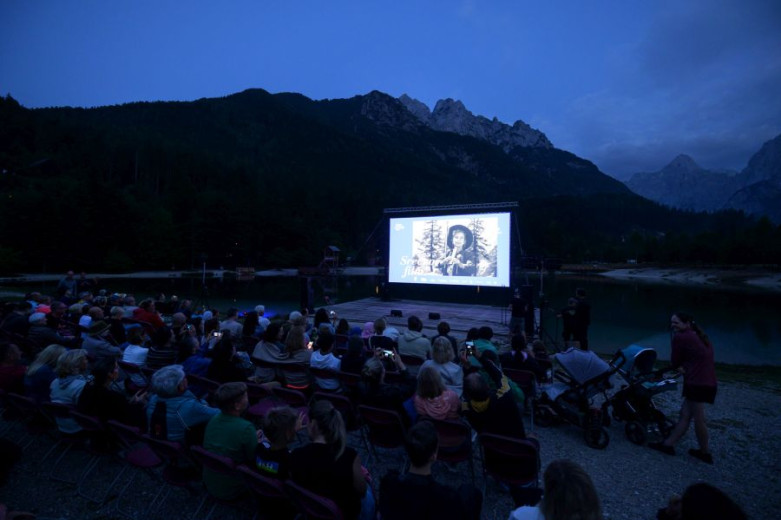 To mark the 120th anniversary of Slovenian cinema, a digitally restored version of the film Kekec (1951) was premiered at the idyllic setting of Lake Jasna in Kranjska Gora. Photo: Katja Goljat
To mark the 120th anniversary of Slovenian cinema, a digitally restored version of the film Kekec (1951) was premiered at the idyllic setting of Lake Jasna in Kranjska Gora. Photo: Katja Goljat
Generations of children and young people have grown up with Kekec. The literary character Kekec first appeared in Josip Vandot's stories, and later on the big screen in the first Slovenian youth film in 1951.
It was also the first Slovenian feature film to win an international award at the 13th Venice International Film Festival. The black-and-white film was shown in cinemas around the world, including in China.
The first Slovenian silent feature film, In the Kingdom of the Goldhorn (V kraljestvu Zlatoroga, 1931), reflects a love for the Slovenian mountains, where the story of Kekec also unfolds. It follows the journey of three friends – a student from Ljubljana, a steelworker from Jesenice, and a farmer – as they climb to the summit of Triglav, into the kingdom of the legendary Goldhorn.
The film On Our Own Land (Na svoji zemlji, 1948), directed by France Štiglic, is considered the first Slovenian sound feature film. It was also the first Slovenian and Yugoslav film to be presented in the official competition programme at the Cannes Film Festival.
Classics of Slovenian film
To mark the 100th anniversary of Slovenian film in 2005, Slovenian film critics selected Dance in the Rain (Ples v dežju, 1961) as the greatest Slovenian film of all time. This romantic drama is based on the novel Black Days and a White Day (Črni dnevi in beli dan). It tells the story of Maruša, an actress, and Peter, a painter. He lives in a dark rented room and she lives in a cramped apartment; they spend most of their time in a local tavern.
Many still consider Blossoms in Autumn (Cvetje v jeseni, 1973) to be the most beautiful Slovenian love story. This touching tale, adapted from Ivan Tavčar's literary work, follows the story of Janez, a city lawyer who travels to the countryside and meets a young woman, Meta. Audiences were captivated by its emotional depth, stunning mountain scenery, and the powerful performances of the lead actors.
Soon after came another unforgettable hit: the family comedy Real Pests (To so gadi, 1977). The film tells the story of Štebe, a bus driver and widower with five sons who drive the entire neighbourhood into despair with their everyday pranks until the headstrong Meri suddenly appears at their doorstep one day. The film has become a symbol of everyday humour.
Those who grew up in the 1980s will undoubtedly remember the cult youth films Happiness on a Leash (Sreča na vrvici, 1977) and Summer in a Shell (Poletje v školjki, 1985). The former follows the adventures of Matic and his dog Jakob, while the latter is a coming-of-age story about twelve-year-old Tomaž and his adventures in town and at the seaside.
After Slovenia gained independence, audiences were captivated by the film Outsider (1997), which is widely regarded as the first major post-independence hit. It tells the story of Sead, a Bosnian secondary school student who moves to Ljubljana due to his father's job and falls in love with his classmate Metka. It was seen by over 90,000 people in Slovenia and is one of the most-watched Slovenian films of all time.
Another notable film is Bread and Milk (Kruh in mleko, 2001), the debut feature by director Jan Cvitkovič, which won the Lion of the Future award at the Venice Film Festival. The film follows Ivan, an alcoholic who returns home after treatment and wants to make a fresh start. However, even minor everyday challenges reveal the fragility of his decision, setting in motion a series of fateful events.
Contemporary hits
Rooster's Breakfast (Petelinji zajtrk, 2007) is a romantic comedy and one of the biggest domestic hits, being the third most-watched Slovenian film since 1991. Nearly 184,000 people watched it in Slovenian cinemas, and 421,500 people watched it on national television. The film focuses on the everyday lives of car mechanic Gajaš and his friends as they discuss life, love and dreams while working in a small-town garage.
The films Let's Go Our Own Way (Gremo mi po svoje) and its sequel, released in 2010 and 2013 respectively, brought Slovenian cinema back to the mountains and captured the hearts of audiences. They became the second and fifth most-watched feature films in independent Slovenia. Let's Go Our Own Way is a youth comedy in which the teenagers are more interested in having fun, making friends and finding love than in following the rules of scouting.
The drama Class Enemy (Razredni sovražnik, 2013) takes us into a classroom charged with tension. Due to their differing views on life and the strict approach of the new German teacher, relations between the students become strained. When one of the students commits suicide, the teacher finds himself at the centre of accusations and doubts. Rok Biček's debut film impressed critics, who described it as one of the most exciting debuts in recent years. It received 35 awards.
Stories from the Chestnut Woods (Zgodbe iz kostanjevih gozdov, 2019) is a dreamlike story set in post-war Venetian Slovenia. There, a quiet friendship develops between an elderly carpenter and a lonely chestnut seller. Exploring loss, memory and departure, the film won a record eleven Vesna awards at the Festival of Slovenian Film.
Little Trouble Girls (Kaj ti je deklica), the feature debut of screenwriter and director Urška Djukić, which gives a voice to women, won the Best Film Award from the International Federation of Film Critics (FIPRESCI) in the Perspectives section at the 75th Berlinale.
The international jury explained: "The filmmaker beautifully portrays the struggles of a teenage girl stepping into adolescence – the push and pull of sexuality and societal restrictions – through excellent cinematic expression."
From Film to Archives
The aforementioned films represent only a fraction of the broad and high-quality spectrum of Slovenian film. Their value is further confirmed by numerous international awards and critical acclaim.
Film enthusiasts can learn more about Slovenian films, achievements, and new releases on the websites of the Slovenian Film Database and the Slovenian Film Centre:
Slovenian Film Database | BSF – Slovenian Film Database
The history of Slovenian film is also explored in an exhibition by the Archives of the Republic of Slovenia, which is celebrating its 80th anniversary this year. The From Film to Archives exhibition showcases part of the preserved film archival heritage created in Slovenia during the first four decades of the last century.
The central part of the exhibition consists of screenings of 12 selected films, through which visitors can trace the development of Slovenian cinematography – from silent to sound films, from black-and-white to colour film photography, and from short documentaries to feature-length fiction films.

